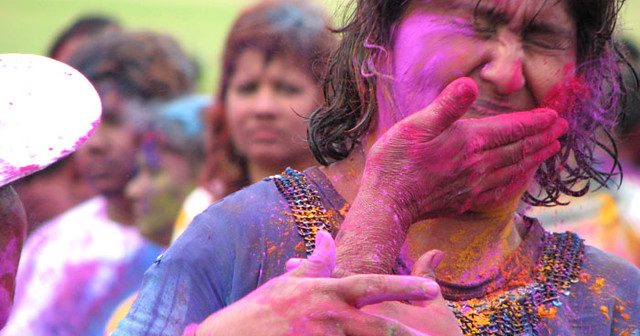Holi, the vibrant festival of colors, signifies the triumph of good over evil and the arrival of spring. However, amidst the revelry, the use of chemical-laden colors can pose a significant health risk. This article equips you with essential knowledge to safeguard yourself from allergies and poisoning during Holi celebrations.
Understanding the Risks:
Traditional Holi colors were derived from natural ingredients like turmeric, beetroot, and indigo, posing minimal health risks. However, in recent years, these have been replaced by cheaper, synthetic alternatives. These synthetic colors often contain harmful chemicals like lead, mercury, chromium, and coal tar dyes.
Health Concerns:
Exposure to these chemicals can lead to a range of health problems, including:
- Skin irritation and allergies: Chemical colors can cause itching, burning, rashes, and allergic reactions. These can be particularly severe for individuals with sensitive skin or pre-existing skin conditions like eczema.
- Eye irritation and infections: Colored powder can irritate the eyes, causing redness, watering, and temporary vision problems. In severe cases, it can lead to corneal abrasions or infections.
- Respiratory problems: Inhaling colored powder can irritate the respiratory tract, causing coughing, sneezing, and difficulty breathing. This is especially worrisome for people with asthma or allergies.
- Poisoning: Ingestion of colors, particularly by young children, can lead to poisoning. Symptoms can include nausea, vomiting, diarrhea, and abdominal pain. In extreme cases, it can affect the nervous system and internal organs.
Protecting Yourself:
By following these precautions, you can significantly reduce your risk of experiencing health problems during Holi:
- Choose Natural Colors: Whenever possible, opt for colors made from natural ingredients like flowers, herbs, and pulses. These are gentler on the skin and less likely to cause allergic reactions.
- Apply Oil: Applying a thin layer of coconut oil, olive oil, or cold cream to exposed skin can create a barrier between your skin and the colors. This can help minimize irritation and make the colors easier to wash off later.
- Protect Your Eyes: Wear sunglasses or goggles to shield your eyes from colored powder. This is particularly important for children who might find it difficult to keep their eyes closed during celebrations.
- Cover Your Hair: Consider wearing a cap or scarf to protect your hair from colored powder. This will also make it easier to clean your hair after the festivities.
- Respiratory Protection: If you have asthma or allergies, wearing a dust mask can help filter out colored powder and reduce respiratory irritation.
- Hydrate: Drink plenty of water throughout the day to stay hydrated and flush out any ingested colors.
- Wash Thoroughly: After the celebrations, take a cool shower and wash your hair thoroughly with a gentle shampoo. Remove all traces of color from your skin with soap and water.
- Seek Medical Attention: If you experience severe itching, burning, eye problems, respiratory difficulties, or any other concerning symptoms, seek immediate medical attention.
Beyond Self-Protection:
Spreading awareness among your family and friends about the dangers of synthetic colors can go a long way in promoting safer Holi celebrations. Here’s what you can do:
- Advocate for Natural Colors: Encourage others to use and purchase natural colors.
- Educate Children: Teach children about the importance of safe Holi practices and discourage them from putting colors in their mouths or eyes.
- Organize Eco-Friendly Holi Events: Consider organizing small gatherings where natural colors are used, promoting a more sustainable and healthy approach to the festival.
Conclusion:
Holi is a time for joyous celebrations and vibrant colors. By taking precautions and opting for natural ingredients, you can enjoy the festivities while safeguarding yourself and loved ones from the health hazards associated with synthetic colors. Remember, a little planning and awareness can go a long way in ensuring a safe and healthy Holi for everyone. Let the colors of Holi represent joy, not health risks. Play safe, celebrate responsibly, and have a Happy Holi!






